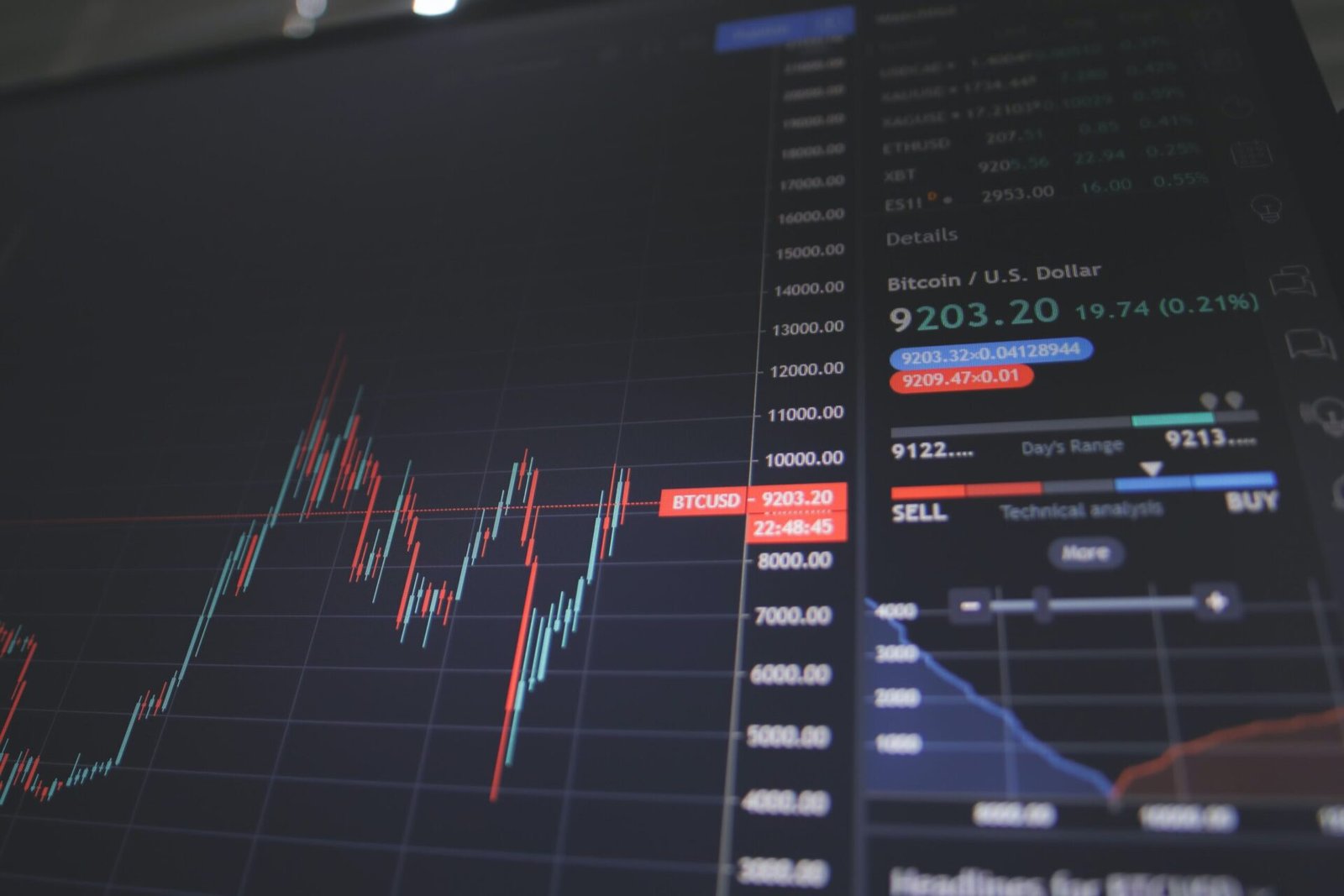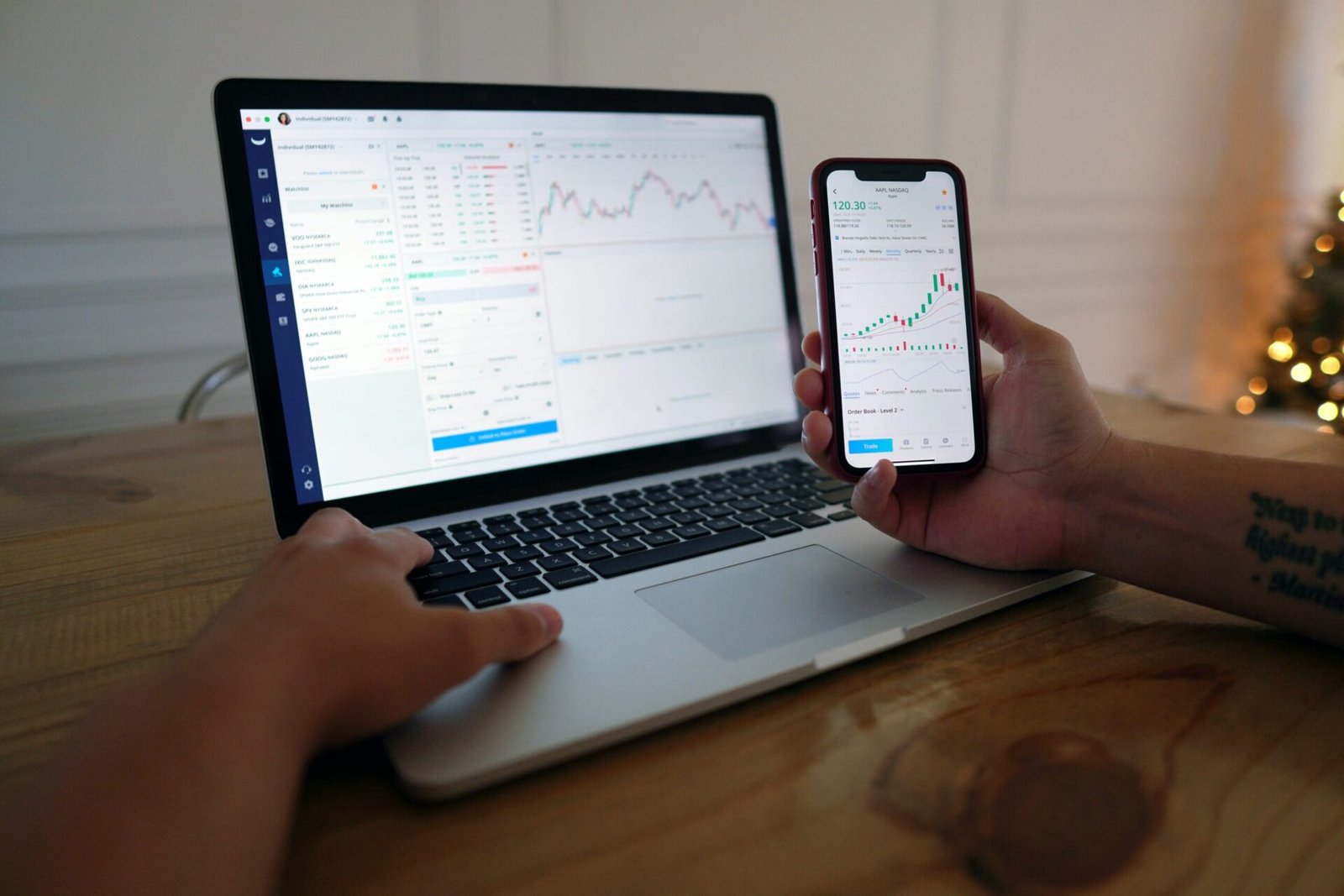Introduction
When it comes to trading in financial markets, it is crucial to understand what drives the markets. The factors that influence market movements can vary from economic indicators and geopolitical events to investor sentiment and market psychology. In this blog post, we will explore some of the key drivers of the markets that traders should be aware of.
Economic indicators play a significant role in shaping market movements. These indicators provide insights into the health of the economy and can influence investor sentiment. Key economic indicators include gross domestic product (GDP), inflation rates, employment data, and consumer spending. Traders closely monitor these indicators as they can provide valuable information about the overall state of the economy and help predict future market trends.
Geopolitical events also have a profound impact on financial markets. Political instability, trade disputes, and international conflicts can create uncertainty and volatility in the markets. For example, the outcome of a presidential election or a major trade agreement can significantly influence investor sentiment and market movements. Traders need to stay informed about global events and their potential impact on the markets to make informed trading decisions.
Investor sentiment and market psychology are intangible yet powerful drivers of market movements. The collective emotions and behavior of market participants can create trends and patterns in the markets. For instance, if investors are optimistic about the future prospects of a particular industry, they may drive up the prices of related stocks. On the other hand, if there is widespread fear or pessimism, it can lead to a sell-off and market decline. Traders need to be aware of these psychological factors and use them to their advantage in their trading strategies.
In addition to these key drivers, technological advancements and regulatory changes can also impact financial markets. The rise of digital platforms and algorithmic trading has revolutionized the way markets operate. High-frequency trading and automated systems can execute trades at lightning speed, influencing market liquidity and volatility. Moreover, regulatory changes, such as new laws or policies, can have a significant impact on specific industries or sectors, leading to market disruptions or opportunities for traders.
Understanding these key drivers of the markets is essential for traders to navigate the complex world of financial trading successfully. By staying informed about economic indicators, geopolitical events, investor sentiment, and market psychology, traders can make informed decisions and capitalize on market opportunities. In the following sections, we will delve deeper into each of these drivers and provide practical insights and strategies for traders to incorporate into their trading approach.
Economic Indicators
One of the primary drivers of the markets is economic indicators. These indicators provide insights into the health and performance of an economy. Traders closely monitor these indicators as they can have a significant impact on market sentiment and investment decisions.
Gross Domestic Product (GDP) measures the total value of goods and services produced within a country. It is a crucial indicator of economic growth and can provide valuable information about the overall health of an economy. A high GDP growth rate is generally seen as positive for the markets, as it suggests increased economic activity and potential investment opportunities. On the other hand, a low GDP growth rate may indicate a sluggish economy and could lead to cautious investor sentiment.
The unemployment rate is another essential economic indicator that traders pay close attention to. It indicates the percentage of the labor force that is unemployed. High unemployment rates can be a sign of a weak economy, as it suggests a lack of job opportunities and reduced consumer spending. Conversely, low unemployment rates are typically associated with a strong economy and can boost investor confidence. Traders analyze the unemployment rate to assess the overall health of the labor market and its potential impact on various industries and sectors.
Inflation rate is a critical economic indicator that measures the rate at which the general level of prices for goods and services is rising. Traders closely monitor inflation rates as they can impact interest rates and the purchasing power of consumers. High inflation rates can erode the value of money and reduce the affordability of goods and services, which can have negative implications for businesses and consumers. On the other hand, low inflation rates can stimulate economic growth and encourage investment. Central banks often use monetary policy tools, such as adjusting interest rates, to control inflation and maintain price stability.
Interest rates play a vital role in the economy and are closely watched by traders. Central banks use interest rates to control inflation and stimulate economic growth. Changes in interest rates can have a profound impact on various asset classes, such as stocks, bonds, and currencies. When interest rates are high, borrowing becomes more expensive, which can slow down economic activity and potentially dampen investor sentiment. Conversely, lower interest rates can encourage borrowing and investment, leading to increased economic activity and potentially higher market returns. Traders carefully analyze central bank statements and economic data to anticipate potential changes in interest rates and adjust their investment strategies accordingly.
Overall, economic indicators provide valuable insights into the health and performance of an economy. Traders rely on these indicators to make informed investment decisions and navigate the markets effectively. By closely monitoring GDP growth, unemployment rates, inflation rates, and interest rates, traders can gain a better understanding of the current economic climate and position themselves strategically for potential opportunities and risks.
Geopolitical Events
Geopolitical events can significantly influence market movements. These events include political developments, government policies, and international conflicts. Some of the key geopolitical events that traders should be mindful of include:
- Elections: Elections can bring about changes in government policies and regulations, which can impact specific industries or sectors. Traders often analyze election outcomes and their potential implications for the markets. For example, the recent presidential election in the United States had a significant impact on the stock market. Investors closely followed the candidates’ economic policies and their potential effects on various industries such as healthcare, technology, and energy. The uncertainty surrounding the election results led to increased market volatility, with stock prices fluctuating based on the perceived impact of each candidate’s proposed policies.
- Trade Agreements and Tariffs: Trade agreements and tariffs can affect international trade and the profitability of companies operating in specific industries. Changes in trade policies can lead to market volatility. For instance, the ongoing trade tensions between the United States and China have had a profound impact on global markets. The imposition of tariffs on various goods and the retaliatory actions taken by both countries have created uncertainty and disrupted supply chains. As a result, investors have closely monitored trade negotiations and announcements related to tariffs, as they can significantly impact the earnings and growth prospects of multinational corporations.
- War and Terrorism: Political instability, wars, and acts of terrorism can create uncertainty in the markets. Traders closely monitor geopolitical tensions and their potential impact on global markets. For example, the outbreak of the Syrian civil war and the rise of ISIS led to increased volatility in the oil markets. Concerns over supply disruptions and the potential escalation of conflicts in the Middle East caused oil prices to spike. Similarly, terrorist attacks in major financial centers like New York and London have had immediate and lasting effects on the stock markets, as investors react to the potential economic and political consequences of such events.
Understanding and staying informed about geopolitical events is crucial for traders and investors. By analyzing political developments, government policies, and international conflicts, market participants can make more informed decisions and adjust their investment strategies accordingly.
Investor Sentiment and Market Psychology
Investor sentiment and market psychology play a crucial role in driving market movements. The behavior and emotions of market participants can influence buying and selling decisions, leading to price fluctuations. Some factors that can impact investor sentiment include:
- Market News and Headlines: Positive or negative news headlines can influence market sentiment. Traders often react to news related to earnings reports, mergers and acquisitions, regulatory changes, and other market-moving events. For example, a positive earnings report from a major company can boost investor confidence and lead to increased buying activity. On the other hand, negative news such as a regulatory investigation or a decline in consumer spending can create fear and uncertainty, prompting investors to sell their holdings.
- Market Trends and Patterns: Traders analyze market trends and patterns to identify potential buying or selling opportunities. Technical analysis tools and indicators can help traders gauge market sentiment and make informed decisions. For instance, if a stock price has been consistently rising over a period of time, it may indicate positive market sentiment and attract more buyers. Conversely, if a stock price has been declining steadily, it may signal negative sentiment and prompt investors to sell.
- Psychological Factors: Fear, greed, and herd mentality can significantly impact market psychology. Traders need to be aware of these psychological factors and manage their emotions to avoid making impulsive trading decisions. For example, fear can lead to panic selling during a market downturn, causing prices to plummet further. On the other hand, greed can drive investors to chase after high returns without considering the underlying risks, leading to speculative bubbles. Additionally, the herd mentality can cause investors to follow the crowd, even if it goes against their better judgment.
Understanding investor sentiment and market psychology is essential for traders and investors to navigate the financial markets successfully. By keeping a close eye on market news, trends, and their own emotions, market participants can make more informed decisions and potentially capitalize on market opportunities.
Industry and Company-Specific Factors
Market movements can also be influenced by industry-specific and company-specific factors. These factors can include:
- Industry Performance: The performance of specific industries can impact the overall market. For example, a strong performance in the technology sector can lift the broader market, while a decline in the energy sector can weigh on market sentiment. Investors closely monitor the performance of different sectors to identify potential opportunities and risks. They analyze factors such as industry growth rates, competitive dynamics, and regulatory changes that can affect the profitability and outlook of companies operating in those sectors. Understanding industry trends and dynamics is crucial for making informed investment decisions.
- Company Earnings: The earnings reports of individual companies can have a significant impact on their stock prices and the broader market. Traders closely monitor earnings announcements and analyze the financial performance of companies. Positive earnings surprises can lead to a surge in stock prices, while disappointing earnings can result in sharp declines. Investors evaluate various financial metrics such as revenue growth, profit margins, and cash flow to assess a company’s financial health and growth prospects. Company-specific factors, such as management decisions, competitive advantages, and market positioning, also play a role in determining the market reaction to earnings releases.
- Product Launches and Innovations: Product launches and innovations can drive market movements, especially in industries such as technology and healthcare. Positive news regarding new products or breakthrough technologies can lead to increased investor interest. For example, the unveiling of a highly anticipated smartphone or the announcement of a new drug can generate excitement and attract investors. Market participants closely follow news and developments related to product launches and innovations, as they can have a significant impact on the competitive landscape, market share, and revenue potential of companies operating in these industries.
- Macroeconomic Factors: In addition to industry and company-specific factors, macroeconomic factors such as interest rates, inflation, and GDP growth also influence market movements. Changes in these factors can affect investor sentiment and the overall economic outlook. For example, a decrease in interest rates can stimulate borrowing and investment, leading to increased consumer spending and business expansion. On the other hand, rising inflation can erode purchasing power and negatively impact corporate profits. Investors consider macroeconomic indicators and trends to assess the overall health of the economy and make investment decisions accordingly.






Be First to Comment